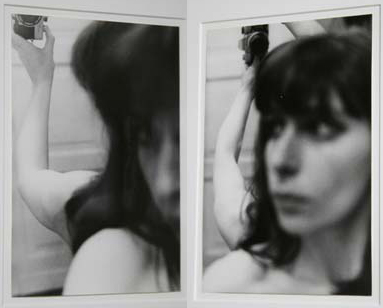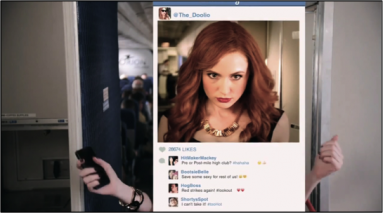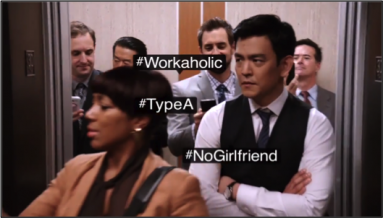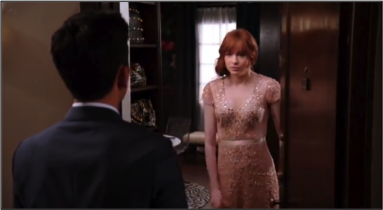ABC's upcoming Selfie draws on the perennial fantasy of "fixing" female disobedience with modesty
The selfie is a modern folk-devil. Constructed within popular discourse as a trivial type of image, the selfie is predominately associated with a set of negative female stereotypes relating to narcissism, vapidity, and sexual impropriety. To see how this discourse works and to uncover its implications for social control, we need only consider the trailer for ABC’s upcoming new sitcom Selfie.
The show will focus on Eliza Dooley, an updated version of the lead character of George Bernard Shaw’s Pygmalion and its musical theater remake, My Fair Lady. Whereas Shaw’s Eliza was marked by certain working-class clichés — such as her strong accent and unrefined manners — today’s equivalent embodies the “problem” of modern femininity, in that Eliza’s confident entry into the virtual public sphere is presented as emblematic of her lack of restraint in other areas of her life. It is this absence of feminine discipline that is seen as the problem: She lacks the social graces and controlled appetite (relating to food, sex, or self-representation as signified by selfies) that continue to be expected of young women.
The story of Pygmalion is an apt template for exploring the discourse of the selfie. Both express a marked disdain for women and a desire to control them, replacing their inappropriate untutored modes of self-expression with compliance to a system of male-issued rules. The fable of the errant subject’s correction consolidates gendered power relations, offering tidy narrative satisfactions and conventional rewards for the women who submit to discipline.
In the Selfie trailer, we see Dooley making advances on a married man, vomiting in public, and displaying poor social skills by forgetting a coworker’s name — all of which makes her eligible for correction and education at the hands of Henry Higenbottam, reimagined in Selfie as a PR expert. But what chiefly conveys her apparent need for correction is her selfie-taking. In the same way that class made Shaw’s Eliza deserve her correction, today’s Eliza requires it because of her social-media use, which is culturally understood as a manifestation of her problematic femininity. The selfie is interpreted as not just an act of self-representation but also of self-promotion, and as such conveys the "problem" that Eliza, a modern empowered woman, represents: namely, that she is overconfident and self-interested, and does not automatically prioritize the needs of others. Selfie-taking symbolizes the loss of certain qualities of feminine passivity: modesty, privacy, and selflessness.
The use of selfies to flesh out Eliza’s character and orchestrate the show’s narrative arc relies upon a shared social understanding of what selfies are presumed to mean, a social construction that has emerged via numerous articles, blog posts, forum comments, and memes. Rather than celebrate selfie-taking’s potential for negotiating and performing identity, the practice is positioned alongside women’s use of sexting as indicative of a dangerously out-of-control feminine sexuality. This moral panic is evident throughout dominant cultural discussions of the selfie, such as in the news coverage of a security company retrieving personal data from secondhand cell phones, despite having been restored to their factory settings. Although there were emails, contacts, and messages on these phones, the majority of news outlets emphasized the presence of naked selfies, implying that this type of data was the most dangerous and problematic. Stories such as this one strengthen the association between selfie-taking and reckless sexual display, which is presented as inherently and supremely dangerous. This has become so normalized that viewers can be counted on to approach the ABC show with an understanding of the selfie as troublesome and trivial, connoting a devalued subjectivity, already in place.
In the moralizing discourse about selfies, the assumption that narcissism is behind the practice establishes a cyclical association between the image and female subject, in which each is enlisted to reinforce the low status of the other. A music video by The Chainsmokers exemplifies this connection: A woman stares at her reflection and engages in a quick-fire monologue relating to her own appearance, relative to other women. Her speech is broken only by the repeated refrain “But first, let me take a selfie,” used to indicate a female subjectivity that is laughably self-absorbed. When recycled throughout popular discourse, this stereotyping comes to have a disciplinary function, in that it defines selfie takers (predominantly conceptualized as young people and women) as legitimate targets for correction.
In the Selfie trailer, Higenbottam says he wants to turn what he sees as a "vapid social media-obsessed narcissist" into a "woman of stature." The correction Eliza receives is assumed to be validated in viewers’ eyes by her pride at being “Insta-famous.” When Higenbottam prevents Eliza’s selfie-taking by physically restraining her, insisting that "you think that you're getting it, but you are in fact missing it," the apparently urgent need to reject the selfie and the deplorable subjectivity behind it is made explicit. As viewers, we are invited to share in this moment of physical correction, understanding that it is not just the selfie that is being discarded but also the objectionable personal qualities that it symbolizes. This prohibition in fact demonstrates Higenbottam’s contempt for Eliza, which is matched only by his compulsion to remake her as his ideal, purged of her supposed vices.
Higenbottam’s intervention in Eliza’s selfie-taking references the popular understanding of mediated experiences (and those who have them) as somehow of less value than the “real thing.” The contradiction, of course, is that in instructing Eliza to reject what appears to him as fake, Higenbottam fabricates his own model of authentic femininity. This demonstrates how legitimacy is strategically denied to the selfie-taker, rather than it stemming from any inherent poverty in their experience or their choice of how to document it. An example of the scorn directed at social media users appears in the show Shut Your Facebook, in which subjects are reprimanded and mocked for the unrestrained qualities of their online presence. It is not so much authenticity that the show demands, but compliance with a set of social norms, regarding self-control and humility.
Ultimately, both this show and the stereotype of the selfie demonstrate a fantasy of female obedience, in which the self-definitions of women (as represented by both the selfie and by Eliza’s earlier transformation from school nerd to glamorous vamp) are undermined in order to facilitate male satisfaction. It is through becoming malleable and passive, and by rejecting the agency represented by the selfie, that Eliza finds redemption.
The discourse of the selfie is therefore not predominately a question of what selfies mean but how their denigration can be used to reinforce hierarchies and elicit compliance with social norms. Furthermore, the disdain directed at selfies permits the expression of a specific form of misogynistic hatred, which is concealed beneath a veneer of photographic discussion.
In the space of three minutes, Selfie’s trailer shows the heroine being molded to conform to society’s ideals of refined femininity: she appears more demure in appearance and manner and is shown laughing with co-workers and socializing with her peers. Eliza is told that the process is “working”, and that she is transitioning into social acceptability. To demonstrate Eliza’s elevated status, we see her and Higgins going out on a date and play fighting in the rain. Rejecting the selfie evidently brings romantic rewards as well as societal approval. The Selfie trailer thus features both the naturalization of regulation, and the legitimation of hatred. Whether there will be ultimately any agency for Eliza Dooley outside this dynamic will become apparent once Selfie airs in the fall. Whether there will be any for selfie-taking women in the wider world may remain an open question.



